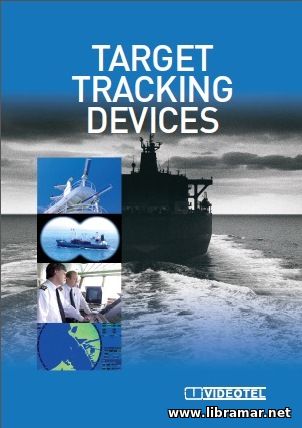 Under the new IMO performance standards relating to the shipboard radar equipment, all of them shall now be capable of displaying the AIS information; the term ARPA, in term, is planned to be replaced with the TTD, standing for the target tracking device. Nowadays, a broad range of such devices is available, and the personnel involved in operation of this equipment, shall be provided with the familiarization training at the time of the boarding, and such training shall be equipment-specific.
The present booklet shall accompany this video training film and is mainly intended to be used by the navigation officers to train the cadets and also to be used by all other people on board to get familiarized with the main issues related to the target tracking as applied to the collision avoidance. Maritime radars enable the vessels to pinpoint other ships and to locate the own position of the vessel relative to the landmarks.
The working principle of the radar consists of sending the beam radio wave pulses and amplification, processing and further displaying of the returning echoes - this allows the radio operator to "see" the ships which would normally not be visible due to the mist of fog, or lack of lighting. It shall be noted that the echoes from some targets may not be strong enough and therefore not display while other objects may be obscured...
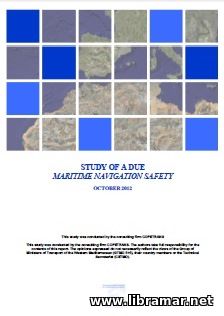 The aim of this technical study is provision of the specific and thorough analysis of all opportunities and of the legal/economic feasibility of implementing the safety due of the navigation, considered a transit charge that should be paid as necessary by all vessels that cross the waters of the coastal States, another aim of the compilers of the publication is to perform a professional estimation of the real contribution of such device to improving the capacities of subject countries in the surveillance of marine navigation, following the decisions of the GTMO 5+5 Ministers.
Among the purposes of this document we would definitely highlights the diagnosis of the systems of the navigation aids, analysis of the real needs (particularly funding needs), operational approaches and legal provisions, and also the possible implementations of the due for the vessels and coastal States, elaboration etc. Six major parts of this study are providing industry with virtually all required info relating to the international legal framework and legal feasibility, services required means/costs, characterization of the due, elements of the benchmark, and impacts. The annexes will provide the terms of reference, the questionnaire plus the actual status of the conventions, as adopted by the GTMO 5+5 members.
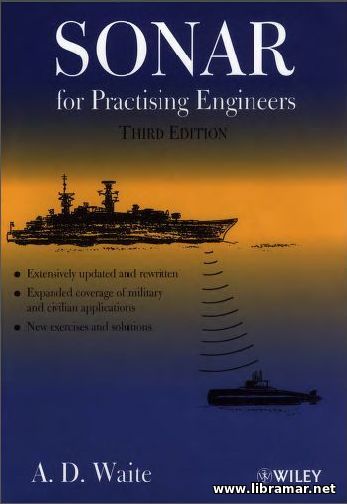 The main aim of Ashley Waite, the practicing engineer and author of this excellent and very useful volume, was to provide all other practicing engineers with the source of information that would help them to understand the fundamental working principles of sonars and also to let them develop the formulas and so-called rules of thumb for the design and performance analysis of subject equipment.
Having a remarkably long professional experience in design and operation of sonars, the author has managed to use this knowledge providing a good practical guidance and working solutions to the various problems most commonly encountered by the technicians and engineers involved in design and operation of the sonars as well as in the performance analysis. The content is arranged in three main parts covering the parameters of the equipment, sound propagation through the sea water and practical sonar systems.
The book is covering all important aspects of sonars and contains numerous useful working examples. The readers are not expected to have any serious knowledge of sonars because the way of explanation is very clear and easily understandable even to the beginners, with no math or physics background required. The end-chapter exercises provided with the correct solutions have been included for the self-assessment and tracking of the training process. The book will be an excellent addition to every engineer's library.
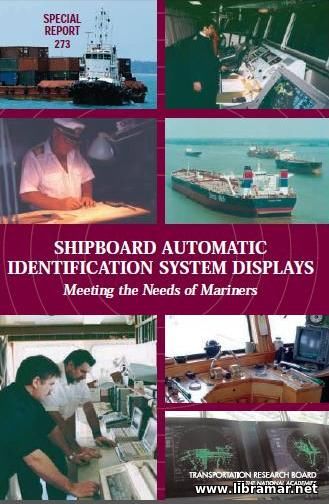 The last years have shown significantly increasing attention paid to the MTS, i.e. maritime transportation systems; the industry focused on efficiency and safety of sea transportation, prevention of potential pollution caused to the environment from ships and also response to the cases of pollution.
The AIS, standing for the auto-identification systems, were originally developed to be a response to all above mentioned concerns, and huge work attempting to define the technical/communication requirements applying to such systems. Those efforts have finally resulted in development of the worldwide carriage requirements for the systems aboard all ships as per the SOLAS Convention, as necessary.
The present report addresses the shipboard display of the information. Considering insufficient amount of the recognized standards and requirements applicable to such display, the USCG did request NRC to examine both technical and human factors. The efforts were made to include proper assessment of the current AIS technologies together with the evaluation of the system designs and capabilities. The committee was originally expected to consider the potential impacts of the changes in the technology, economics, security plus various operational considerations plus human factors, operational environments, technical integration, international standards and other relevant matters...
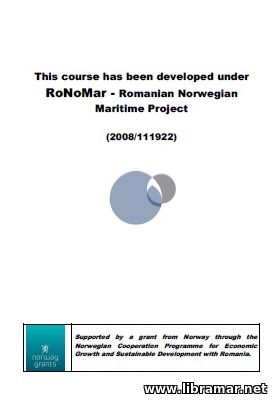 The main content of the present training course was developed under the RoNoMar standing for the "Romanian-Norwegian Maritime Project" and starts with a Glossary of terms/abbreviations used within the publication and industry in general. Radio is considered a basis of all safety and distress systems that are in wide use by the vessels at sea since the initial instance of application of the radio-technology to save the human lives at sea back in 1899.
The radio technology has soon been realized to be very effective and the distress-and-safety system based on the radiotechnology was established in the internationally recognized regulations and rules governing the types of the equipment and frequencies used, together with the established operational procedures.
The book starts with the introduction and theoretical basics of the GMDSS system, followed with the propagation of the radio waves, receivers and transmitters of the waves, safety and distress communications, telex procedures, DSC, radiotelephony and Inmarsat, MSI, terrestrial distress communications, SART, EPIRB, power supplies and general radio-related regulations, traffic charging and antennas, GMDSS frequencies and some additional reference information related to the operators and access codes, antenna positioning etc.
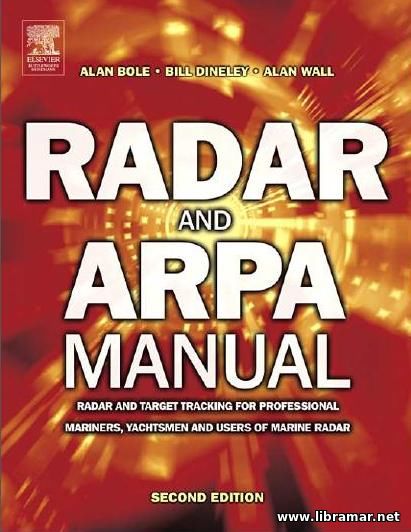 Here is one of the most up-to-date books available today - the standard radar and ARPA manual for professional mariners and yachtsmen - it provides the full coverage of subject systems as well as electronic bridge systems. The publication fully meets both educational and professional marine needs as it addresses both amateur and professional certificate requirements.
It definitely has had much more influences on the specifications and also on the operational practice of the radars than any other title since it provides all necessary info for the mariners. Complete radar/ARPA installation is covered within this manual so it may serve as a very comprehensive reference source covering the techniques and equipment for radar observers.
The content of the volume will provide essential technical information for the navigators during the specific training courses for the electronic systems of marine navigation. ARPA and radar are considered standard shipboard systems to be installed on all commercial ships and they are also quite widely used even in the leisure marine sector. The present release of the publication has been fully revised in order to cover the complete installation making the book maybe the vest available reference on the techniques and equipment for the radar observers using both older and newer systems...
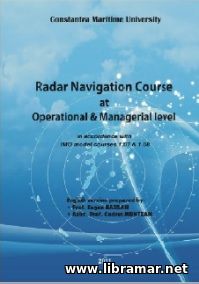 The present official training course will provide the required knowledge of the fundamental theory and practical use of the radars for students and deck officers who are in charge of the operational watch. The content of the book is mainly based on the related guidance on training on radar observation/plotting as well as on the operational use of ARPA contained in the section 0-1/12 of the STCW Convention.
The ultimate intention of the compilers of the course was to meet the prescribed minimum training standards outlined in Table A-III of the subject Convention. Among the aspects covered within the course there are the theory required to gain the proper understanding of how exactly the radar data is obtained and displayed, know the limitations and accuracy of the data, understand how the unwanted responses are formed and recognized, and also get some instructions on the correct usage of the controls in order to obtain an optimal display.
The publication also covers the technical descriptions of the different display modes that are available, and also the choice of the suitable display mode for a specific application. Moreover, it is also covering the recognition of the critical targets, bearing and distance measurement and how to use them to fix the position of the vessel and maintain a plot of the movement of other vessel to help avoid the collision...
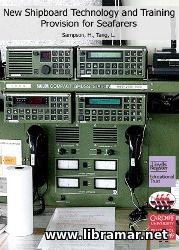 Makers' updates and company circulars provide another source of information for seafarers concerning shipboard equipment and new technology. In this research eight percent of seafarers were not aware, at all. of any company circulars or makers' updates being circulated to sea-staff in their current/most recent company. In relation to the responses to tins question, seafarer nationality played a particularly significant role.
Having encountered a problem with the operation of a piece of equipment the overwhelming majority of respondents would consult a manual. Additionally, around a half of all respondents would consult colleagues. Department, ship type, seafarer age and nationality, were all found to influence the responses offered to tins question. In relation to the main engine maneuvering system engineers were very confident about their knowledge and understanding with 83% self-rating their knowledge of this equipment as 'excellent'. Engineers were less confident about their knowledge of oily water separators however with only 40% claiming 'excellent' knowledge of tins equipment. Overall engineers were least confident about high voltage equipment and 37% of engineers self-rated their knowledge of this equipment as 'basic' or even 'zero'. Navigation officers were markedly more confident about their understanding of AIS and GPS than they were about their understanding of ARPA, GMDSS, and ECDIS. ECDIS was the equipment which officers were least confident about overall, with 9% self-rating their understanding of ECDIS as 'zero1 and a further 21% suggesting it was basic.
Respondents were more confident about ARPA than they were about GMDSS with four percent self-rating their knowledge of ARPA as basic compared with 13% self-rating their knowledge of GMDSS as 'basic'. Although only a quarter of seafarers had an input into the identification of their training needs, almost half of respondents were expected to pay towards their training. Nationality, ship type, department, and age, all impacted upon the responses of seafarers to this question. In relation to compensation for lost leave almost half our respondents stated that it was not usual for them to be compensated for leave time lost as a result of required training in relation to new shipboard technology...
|







